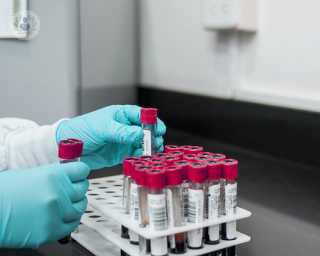Rashes
Dr Olga Kapellou - Paediatrics
Created on: 11-13-2012
Updated on: 09-05-2023
Edited by: Aoife Maguire
What is it?
Exanthema is a pinkish rash that generally happens due to an infectious disease (including; measles, scarlet fever, rubella, or infectious erythema.). It is more common in childhood. It can also be caused as a reaction to a virus; this is known as viral exanthem. If accompanied by a fever, it is known as exanthema subitum, which generally affects babies within their first year of life; sometimes it is due to an unknown disease, so medical attention is important to assess and diagnose the extent of the disease; it can also be a reaction to a medication.

Prognosis
Exanthema has an incubation period of between 5 and 15 days. It normally goes away without any complications, but it is always advisable to see a paediatrician or a dermatologist.
What are the symptoms?
The main symptoms are a fever and a rash in more sensitive areas of the body. The high temperature normally lasts about three days. Once it has gone, a pink spot rash is visible and usually appears on the trunk, neck, and back. Other symptoms may include:
- Malaise
- Headache
- Loss of appetite
- Abdominal pain
- Irritability
- Muscular pain
Medical tests
Exanthema has different eruption patterns. If the patient has symptoms of a viral infection, the diagnosis is obvious. However, when symptoms aren’t so obvious, it will be more difficult to diagnose. A physical skin examination may be enough to identify this condition.
What causes it?
The exanthema rash tends to be caused by a virus. It is more common in childhood and often linked to chicken pox, rubella, and scarlet fever. Other types of virus that often trigger it are:
- Infectious erythema
- Laterothoracic exanthem
- Viral hepatitis
- Toxic shock syndrome
- Kawasaki disease
There are a variety of other conditions that can trigger exanthema.
How can it be prevented?
Infections are part of our daily life, they activate the defences and strengthen the immune system. To avoid these kinds of diseases, it is important to bear in mind that the most common modes of transmission are:
- Faecal-oral route
- Respiratory route
- Skin contact
- Contact with organic liquids
It is important to know and follow hygiene tips to prevent infection. These include: washing your hands, washing children’s toys, and getting the appropriate vaccinations.
What is the treatment?
There isn’t a specific medication to treat this virus, however it normally disappears within 5-6 days. If the temperature gets very high, the specialist may prescribe some medications to bring it down.
Which specialist should I see?
The specialist who treats this is normally a paediatrician, as most cases develop in childhood. If it develops in adults, a dermatologist or a GP will treat it.




